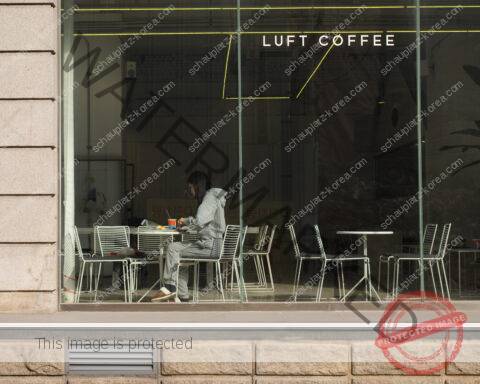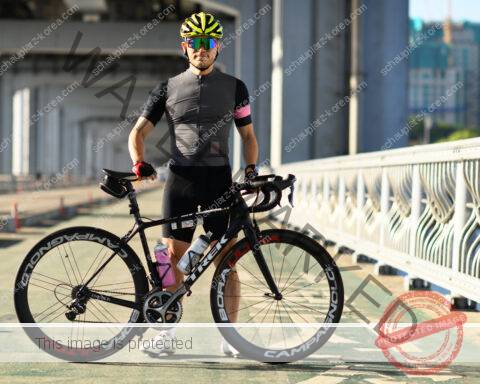Anyone who works as a food courier lives dangerously. Especially in a metropolis like Seoul. I have already reported on the photographer and life artist Noah Han 한노아 (32) in the Art & Culture section about his current project “On y go.” Since he is also on the road as a food courier in addition to photography, I would like to learn more about his personal experiences in this job, which is currently very much in demand.
Noah, how long have you been delivering food?
Since April of this year.
How many food couriers do you think there are in Korea?
It’s hard to estimate. It depends very much on the season. There are really a lot of orders during the rainy season or in the winter when it is cold. Corona has also contributed to the increase in orders. According to the union, there are about 370,000 food couriers registered in Korea. In addition, there are a large number of couriers who are not registered or couriers who are directly employed by a restaurant.
If there is a lot of traffic or if the road conditions are difficult because of rain, snow, or darkness, it can quickly become really dangerous.
A dangerous job?
Indeed. We move around on two wheels and, compared to those on four, we have very little protection. If there is a lot of traffic or if the road conditions are difficult because of rain, snow, or darkness, it can quickly become really dangerous.
Is there a lot of competition among the individual couriers?
Not directly among the couriers. About six months ago, there was a major competition among the various platforms that offer food delivery. The issues are always the same. Who offers the fastest service at the lowest possible price? However, the whole thing has died down somewhat in the meantime. But the prices for delivery have moved noticeably downwards, which is of course to the disadvantage of us delivery couriers and to the advantage of the customers.
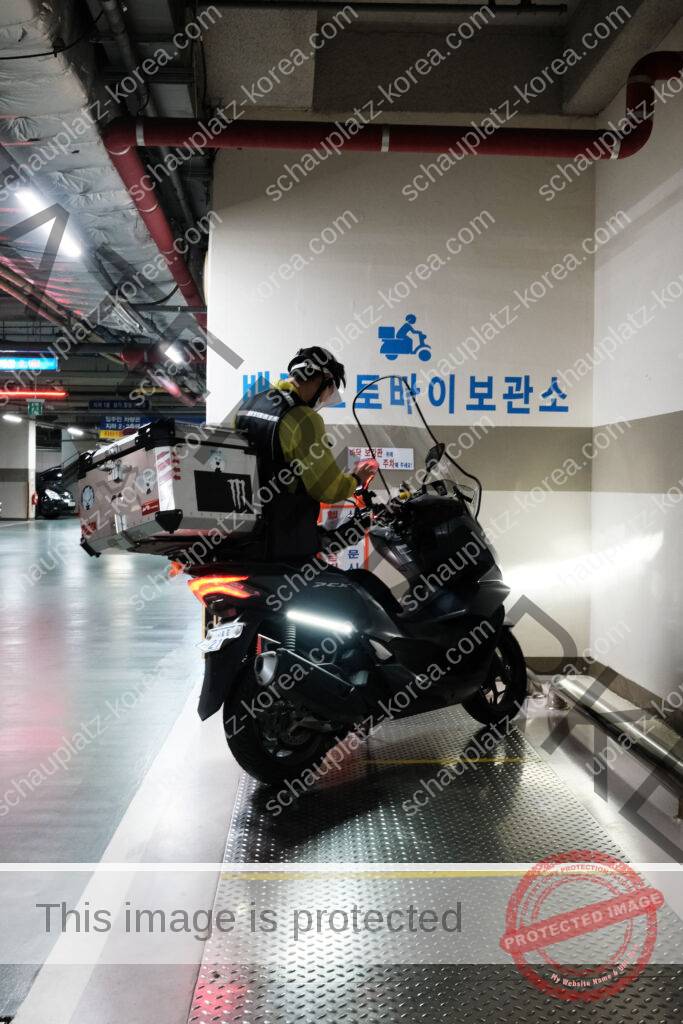
What is the biggest challenge in your job as a food courier?
One important factor is certainly time. Our goal is to deliver the goods to the customer as quickly as possible. In addition, we often have the problem of finding a suitable place to park the bikes. If the delivery address is in one of the ever-growing housing estates with several residential silos and hundreds, if not thousands of apartments, we often must rely on the assistance of security personnel. Unfortunately, we are often not particularly welcome among them. So, it happens again and again that we are not allowed to enter with our scooters and have to park far outside the housing complexes and walk the last bit. This costs us valuable time and gives us a bad customer rating afterward.
On top of that, as mentioned earlier, there is the challenge with traffic and the fact that we “only” get around on two wheels. The biggest threat on Seoul’s streets for us is the cab drivers. Giving a signal when turning right or left, i.e., putting on the turn signal, is not only a waste of time but sometimes even leads to very tricky and dangerous situations.
When I observe food couriers on the road, I see that they often do not obey the traffic rules. For example, running a red light through an intersection, disregarding the safety lines, or spectacular overtaking maneuvers in rush hour traffic…
You are right and I personally am against such violations. Whenever possible, I try to follow the rules. I believe that if you expect this from others, you should respect the rules yourself. Unfortunately, today, this is often not the case.
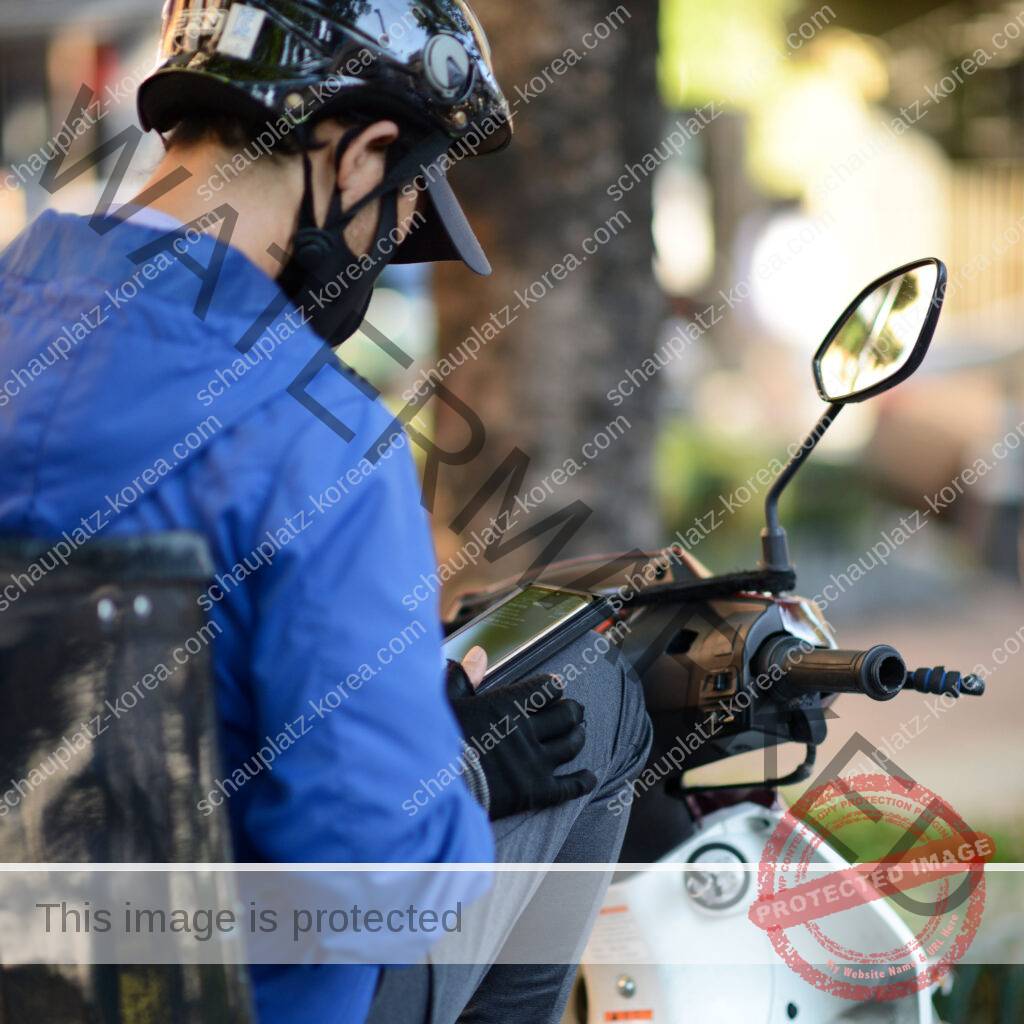
What does your working day as a food courier look like?
In the morning, I fill up my scooter and prepare it for use. Around noon, I then drive to a district where there are many office buildings. I wait there until the first orders arrive. I receive these via smartphone. If I accept an order, I immediately head to the corresponding restaurant, pick up the food and deliver it to the customer.
How long is the average delivery time?
I estimate 15 minutes for the preparation of the meal. In other words, when I receive an order, I have ten to 15 minutes to drive to the restaurant. Then it’s another 15 to 20 minutes, depending on the area until I deliver the meal to the customer.
Do you have time constraints when delivering food, and if so, can you meet them?
The time estimates are calculated by the delivery application. However, this information is based on the airline’s distance from the restaurant to the customer. Most of the time, it is impossible to meet these estimates. This is because traffic and environment are not considered in the calculation. If we cannot deliver on time, there is often criticism.
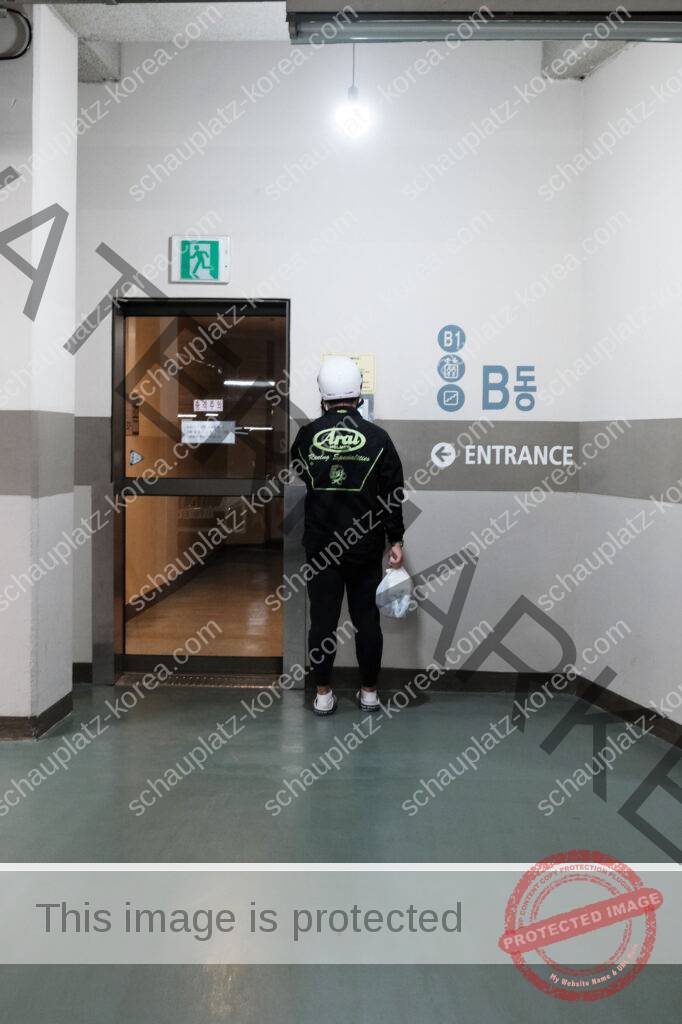
Criticism?
If the meal is delivered to the customer, the order is completed for us. After that, the customer can give a rating on the application anonymously and with a point system. If the courier receives a bad rating, points are subtracted and as a punishment the courier is blocked from further orders for a few hours to days. The pressure is therefore enormous. Unfortunately, it is in the nature of humans that they primarily only gives a rating when they are not satisfied.
Can you live on your income as a food courier?
It’s tight, but somehow it must work. I work about 70% of the time as a food courier. In a ten-hour workday, I earn about USD 120.
With this daily salary I must pay additional fees and expenses such as insurance, motorcycle and gasoline, and any traffic fines themselves. In the end, there is not much left.
Do you think customers appreciate the service of a food courier?
Since you have very little customer contact as a food courier, it is difficult to assess how the customer values the service. What is known, however, is that the union is making efforts to improve the reputation of food couriers in society. It is ensured that the rules of traffic and manners are better observed. There is also permanent work on the technical service to better support the workers.
What is your opinion? How will the courier service evolve?
Eventually, the courier on two wheels will disappear from our daily lives. I recently read that projects are in the test phase in which food deliveries are being made using drones.
Do you order food online yourself?
Yes, often in fact. Because after a 10-hour workday as a food courier, I have neither the desire nor the time to prepare my own food…
Noah, thank you for finding the time to talk to us about your life as a food courier and we wish you all the best for your future.


